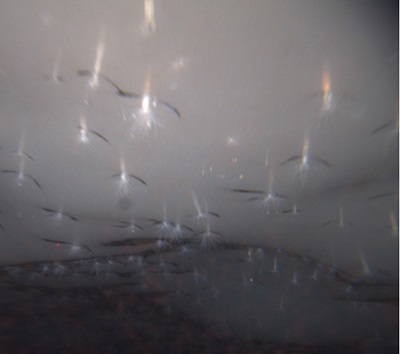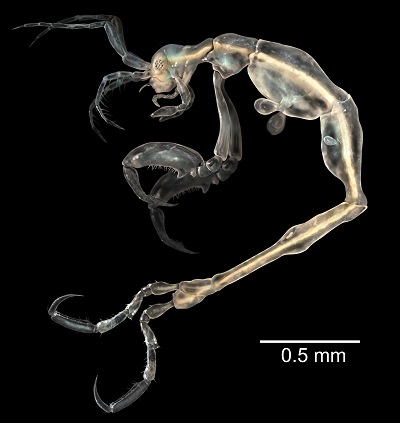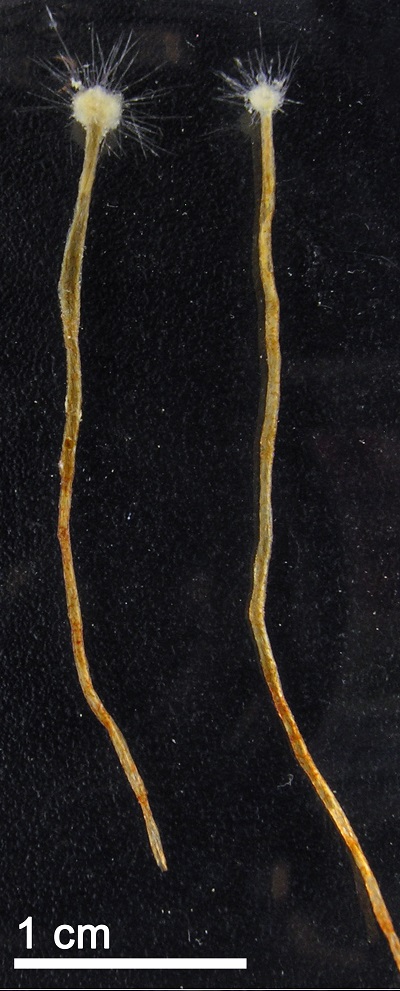First Ice Anemone Makes Top 10 List
A giant single-celled animal and a sea anemone that lives under an Antarctic glacier are among the species identified by the US’s SUNY College of Environmental Science and Forestry’s International Institute for Species Exploration as the top 10 species discovered last year.
An international committee of taxonomists and related experts selected the top 10 from among the approximately 18,000 new species named during the previous year. The annual list, established in 2008, calls attention to discoveries that are made even as species are going extinct faster than they are being identified.
“The majority of people are unaware of the dimensions of the biodiversity crisis,” said Dr Quentin Wheeler, founding director of the IISE and ESF president. Scientists believe 10 million species await discovery, five times the number that are already known to science.
“The top 10 is designed to bring attention to the unsung heroes addressing the biodiversity crisis by working to complete an inventory of earth’s plants, animals and microbes. Each year a small, dedicated community of taxonomists and curators substantively improve our understanding of the diversity of life and the wondrous ways in which species have adapted for survival,” Wheeler said.
Among the top 10:
 Anemone: Discovery on Ice
Anemone: Discovery on Ice
Edwardsiella andrillae (picture credit SCINI)
Location: Antarctica
A species of sea anemone, living under a glacier on the Ross Ice Shelf in Antarctica, raises questions by its very existence. It is not clear how the species withstands the harsh conditions in its habitat. It is the first species of sea anemone reported to live in ice. It was discovered when the Antarctic Geological Drilling Program (ANDRILL) sent a remotely operated submersible vehicle into holes that had been drilled into the ice. This revealed the presence of small creatures, less than 2.5 centimeters long (one inch) with most of their pale yellow bodies burrowed into the ice shelf and their roughly two dozen tentacles dangling into the frigid water below.
 Skeleton Shrimp: A See-through Crustacean
Skeleton Shrimp: A See-through Crustacean
Liropus minusculus (picture credit SINC (Servicio de Informacion y Noticias CientÌficas) and J.M. Guerra-García)
Location: California, U.S.A.
This tiny shrimp, the smallest in the genus, was identified from among specimens originally collected from a cave on that island of romance, sunny Santa Catalina, off the coast of Southern California. Part of a marine family known as skeleton shrimp, only distantly related to the ones some humans love to dip in cocktail sauce, this crustacean is the first of its genus to be reported in the northeastern Pacific. The new species has an eerie, translucent appearance that makes it resemble a bony structure. The male’s body measures just 3.3 millimeters (about an eighth of an inch); the female is even smaller at 2.1 (less than a tenth of an inch).
 Amoeboid Protist: Body Builder from the Mediterranean
Amoeboid Protist: Body Builder from the Mediterranean
Spiculosiphon oceana (picture credit Manuel Maldonado)
Location: Mediterranean Sea
This one-celled organism is four to five centimeters high (1.5 to two inches), making it a giant in the world of single-celled creatures. This foram (part of a distinct group among the many amoeboids) from the Mediterranean Sea gathers pieces of silica spicules, which are actually sponge fragments, from its surroundings and uses them like so many Lego blocks to construct a shell. It ends up looking much like a carnivorous sponge as well as feeding like one, extending pseudopods (a protist’s version of arms) outside the shell to feed on invertebrates that have become trapped in the spiny structures. This species was discovered in underwater caves 30 miles off the southeast coast of Spain. Interestingly, they are the same caves where carnivorous sponges were first discovered.
Why inventory matters
• Without a baseline of what exists, humans will not know if something disappears, moves in response to climate change or invades new habitats. “As long as we remain ignorant of the vast majority of species, we unnecessarily limit our effectiveness at conservation goals.”
• Billions of years of natural selection have driven plants and animals to solve the same survival problems that humans face. “By studying the millions of ways in which organisms have met challenges, we open a great library of possibilities for meeting our own needs more sustainably.”
• Simple curiosity is a factor. “If we want to understand what it means to be human the answer is buried deep in evolutionary history. We are a modified version of our ancestors, and they of theirs … all the way back to the first species on Earth. With the loss of every species, we lose one chapter in our own story that we’ll never get back.”
Wheeler hopes the Top 10 draws attention to the urgent need, and real possibility, of completing an inventory of all of Earth’s species. “Advances in technology and communication mean that the centuries-old dream of knowing all species is within our reach. The benefits of learning our world’s species are incalculable and the single most important step we can take in preparation for an uncertain environmental future.”
